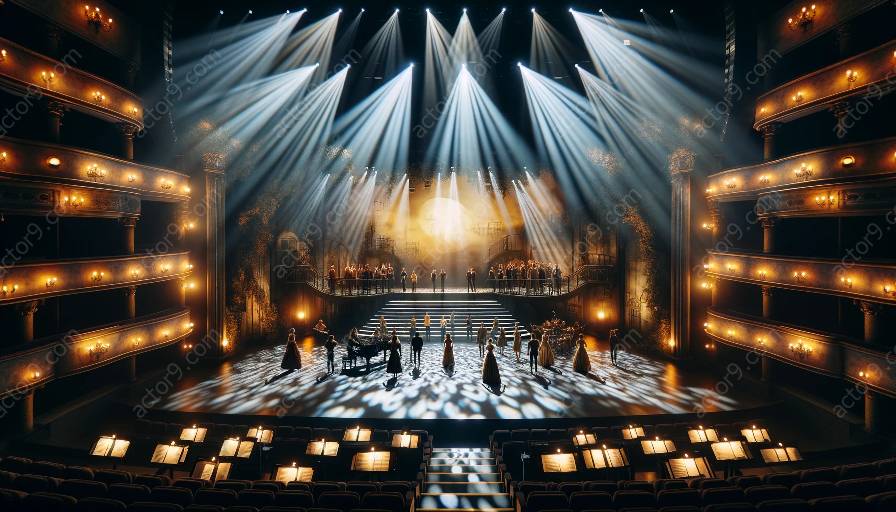Visual rhythm and dynamics in lighting design play a vital role in enhancing the storytelling and emotional impact of musical theatre performances. In this topic cluster, we will explore the significance of visual rhythm and dynamics, their relationship with musical theatre, and how lighting design contributes to the overall experience.
The Importance of Visual Rhythm and Dynamics
Visual rhythm refers to the repetitive and structured arrangement of visual elements, while dynamics relate to the contrast and variation in these elements. In musical theatre, visual rhythm and dynamics can create visual cues that guide the audience's attention, convey emotions, and support the narrative.
Creating Atmosphere and Mood
Lighting design plays a crucial role in establishing the atmosphere and mood of a musical theatre production. By utilizing visual rhythm and dynamics, lighting designers can evoke different emotions, set the tone for specific scenes, and intensify the overall theatrical experience.
Guiding the Audience's Focus
Visual rhythm and dynamics in lighting design can direct the audience's focus to key elements on stage, such as performers, set pieces, or significant moments within the storyline. Through strategic lighting choices, designers can shape the audience's visual journey and enhance their engagement with the performance.
Integration with Musical Theatre
Visual rhythm and dynamics seamlessly integrate with the art of musical theatre, complementing the choreography, music, and storytelling. The synchronization of lighting changes with musical beats and movements creates a harmonious fusion of visual and auditory experiences, amplifying the overall impact on the audience.
Emphasizing Choreography and Movement
Lighting design that captures visual rhythm and dynamics can accentuate the choreography and movement sequences in musical theatre. The interplay of light and shadow can add depth and drama to dance numbers, providing an immersive visual spectacle for the audience.
Enhancing Narrative Elements
Through the use of visual rhythm and dynamics, lighting design becomes an integral part of storytelling in musical theatre. It can emphasize pivotal moments, build tension, and symbolize character emotions, thereby enriching the narrative and strengthening the connection between the performers and the audience.
Collaboration and Techniques
Collaboration between lighting designers, directors, choreographers, and set designers is essential to effectively utilize visual rhythm and dynamics in musical theatre. Various lighting techniques, such as color gradients, strobing, and spotlight manipulation, contribute to creating dynamic visual experiences that elevate the production.
Interactive Visual Design
Advancements in lighting technology allow for interactive visual design elements, where lighting can respond to live performances, music variations, and audience interactions. This interactive approach to visual rhythm and dynamics enhances the immersive nature of musical theatre and opens up new possibilities for creative expression.
Conclusion
Visual rhythm and dynamics in lighting design enrich the visual storytelling of musical theatre, aligning with the artistry of the performances and elevating the audience's engagement. By integrating these elements seamlessly, lighting designers contribute to the holistic experience of musical theatre, leaving a lasting impression on the spectators.




































